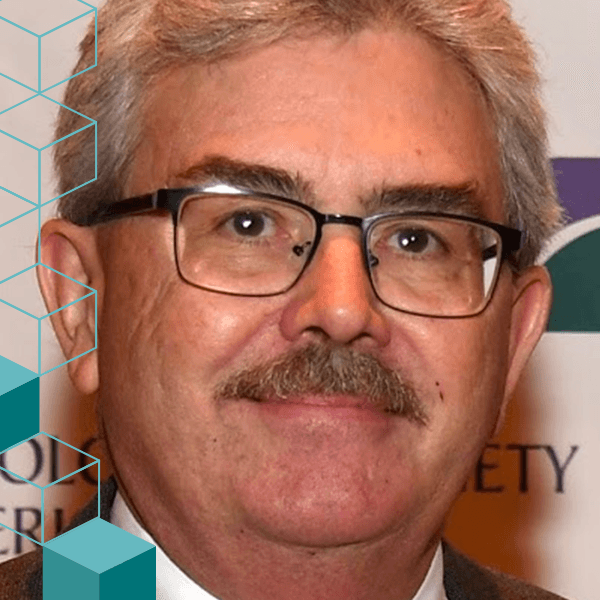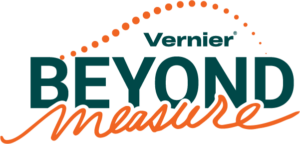
Sharing ideas and inspiration for engagement, inclusion, and excellence in STEM

If nothing else, the last 18 months during this worldwide pandemic have demonstrated the fragility and limitations of our education system. We asked more of teachers as they addressed a broadening range of student needs during an exceedingly difficult time that was amplified by gross inequities in technology for teaching and learning.
Yet as difficult as 2020 proved to be, I believe we have a once-in-a-lifetime chance to transform science education right now through an alignment of policy, funding, and a renewed focus on teaching and learning that we are experiencing post-pandemic. Here’s why I believe this.
Federal Funding to Support Science Education

Last March, Congress passed the American Rescue Plan Act, which includes $123 billion to K–12 education through the Elementary and Secondary School Emergency Relief Fund (ESSER). The ESSER program gives states and districts the flexibility to use recovery funds to address the impact of the coronavirus pandemic on the nation’s students.
ESSER funds can be used to provide educators with the highest-quality tools to advance their students’ learning experiences. Funding can be used to
- Fund teacher professional learning services and time, including formative assessment and curriculum—embedded assessment services and time
- Create networks or support the activities of existing networks (e.g., STEM (science, technology, engineering, math) Ecosystems and Hubs)
- Provide funding for 21st Century Community Learning Centers and summer learning instructors and registration fees
- Provide and fund professional learning/network time for teachers to include grade-level team and vertical articulation (e.g., substitutes, stipends)
- Fund district/school-level positions, science and STEM coordinators, specialists, and coaches
- Purchase classroom assessment materials, including assessment item banks and supplies for performance assessments
- Purchase digital or physical tools for keeping records of student learning (e.g., digital science notebooks, physical science notebooks)
- Purchase curricular materials that are aligned to standards
- Provide cleaning supplies, goggles, lab coats/aprons for individual students
- Purchase materials for family learning (e.g., science kits, trade books)
- Create more accessible spaces for all students (e.g., workbenches, modular furniture)
- Purchase increased numbers of equipment and supplies to minimize sharing/rotation (e.g., student supply kits)
- Provide technology tools and one-to-one devices
- Provide digital simulations and subscriptions
In addition to these suggestions, the American Rescue Plan gives states and districts the flexibility to use recovery funds for any authorized purpose under current federal law, including Every Student Succeeds Act (ESSA) Title II, Title III, Title IVA, and more.
What’s Ahead for Teaching and Learning?
Thanks in part to the pandemic, we are witnessing a generational change in the teaching force, with many senior teachers retiring at a time when fewer people are opting to become science teachers. Coming at a time when more states are adopting or adapting the Next Generation Science Standards, and these standards are becoming central to science teacher preparation courses, new teachers of science can enter the profession with a deep appreciation for how they can organize their teaching. They can use the Science & Engineering Practices as a vehicle for student engagement with content ideas, but then make sense of where student learning fits through cross-cutting concepts. Thus new teachers will enter the classroom with a different sense of curricular expectations than teachers further in their career span.
Continued funding for teacher preparation (scholarships, etc.) will be vital in addressing shortage issues, but we cannot neglect the critical induction years after graduation. Research by Richard Ingersoll at the University of Pennsylvania and others clearly shows that we are burning the teacher workforce candle at both ends, as many new teachers choose to leave the profession within five years. Without the close support of mentorship and coaching in these early career years, we stand the risk of losing a considerable investment in new teaching talent. Reinforcing the utility of the Three-Dimensional Learning model in NGSS in teaching is fundamental to new teachers’ sense of personal agency and effectiveness.
We will not be able to “push the needle” past our current status without supporting teachers across their career span.

The necessity for the highest–quality science teaching, especially in high-need schools, has never been as great since the publication of A Nation at Risk in 1983. Where and how districts and schools use resources matters, and the necessary remedies they can implement require mindful and equitable solutions that are not one-size-fits-all. NSTA is currently engaged in building content and professional learning materials around a Sensemaking Ecosystem, with four pillars through which science teaching can leverage decades of research on brain science and how students learn science. Equity is at the center of this framework.
Retaining teachers is dependent in part on sustained professional development in partnership with other teachers, content specialists, and professional organizations (such as NSTA!) and tailored to different points of science teachers’ professional continuum. Such sustained professional development requires the elevation of science education as a national imperative, the sort of which is recommended by the recent National Academies of Sciences, Engineering, and Medicine report, A Call to Action for Science Education. We will not be able to “push the needle” past our current status without supporting teachers across their career span.
Bringing the 3-D Approach to Teaching and Learning to Schools Nationwide
Current research around science education indicates that a three-dimensional approach to instruction, one that underscores the practices of scientists and engineers and draws connections across the disciplines of scientific study, best facilitates a deep understanding of science. Students who learn in this manner are equipped to continue expanding their scientific knowledge, making them more scientifically literate and better preparing them for college and future careers.
Students who learn in this manner are equipped to continue expanding their scientific knowledge, making them more scientifically literate and better preparing them for college and future careers.
The transition to three-dimensional instruction intentionally integrates key scientific ideas (disciplinary core ideas) with the practices used by real scientists and engineers (science and engineering practices) while also highlighting common themes across disciplines (crosscutting concepts). This approach puts students at the center of instruction, cultivating a child’s innate sense of wonder and curiosity and encouraging students to experience, rather than read about, science.
Three-dimensional instruction requires teachers to approach their classes in novel ways, using strategies they did not themselves experience as children. To do so, teachers need access to high-quality professional learning experiences, rooted in the best practices and within the context of grade- and discipline-specific examples. NSTA encourages this approach for classrooms nationwide and is ready to provide the resources teachers need to facilitate this type of instruction.
Science Is Back!
Policymakers and thought leaders realize that the world’s most pressing problems—such as global pandemics and chronic issues, like global climate change—are best faced by dedicated and interdisciplinary applications of science, STEM, and other disciplines.
Everyone realizes that the most dynamic and high-paying careers of the future are based on STEM and that business decisions in a market economy (for the long run) are best informed by literacy in mathematics and science.
What we do today will have an enormous impact on our future national security and this nation’s continued leadership in science and technology in a post-pandemic world.
We have the opportunity to press the restart button on science education. We have the knowledge, expertise, possible funding, and political will to reform our system of science with a more focused, nimble, and future-oriented perspective.
What’s at stake? What we do today will have an enormous impact on our future national security and this nation’s continued leadership in science and technology in a post-pandemic world. Periods of disruption like what we have recently experienced are historically the opportunities for innovations to take hold and advance broader learning. We are remiss if we do not embrace the many innovations created by educators of science in this period and use them as the means to enact policies to support students’ future science learning.
NSTA has heard this call and is rising to the challenge through science content, professional learning opportunities, and creative partnerships, providing teachers of science with the knowledge, skills, and dispositions for effective practice across their careers.
Share this Article

Sign up for our newsletter
Stay in the loop! Beyond Measure delivers monthly updates on the latest news, ideas, and STEM resources from Vernier.






